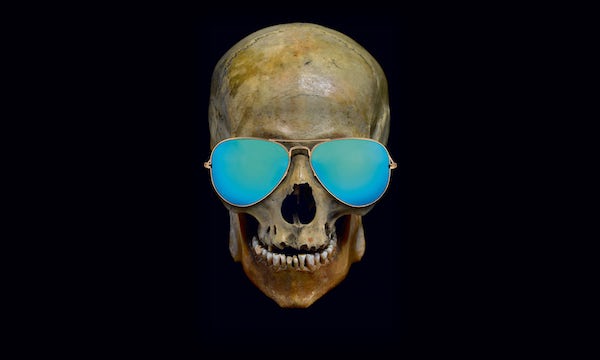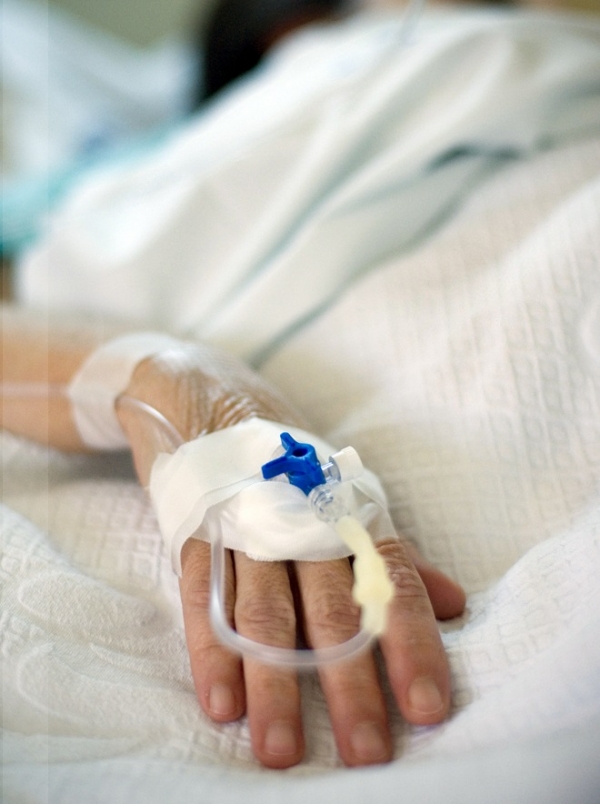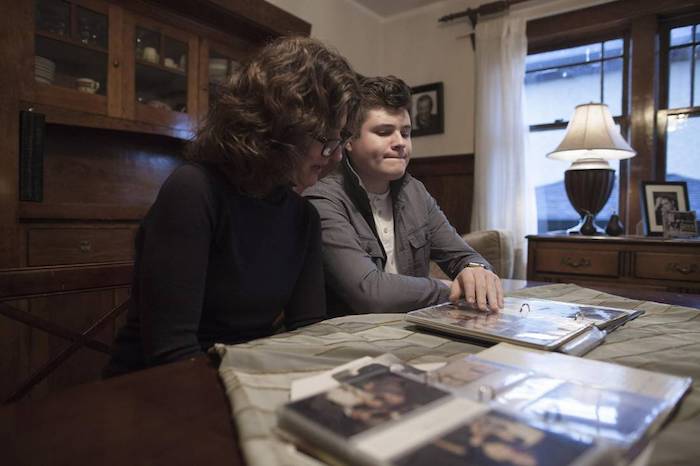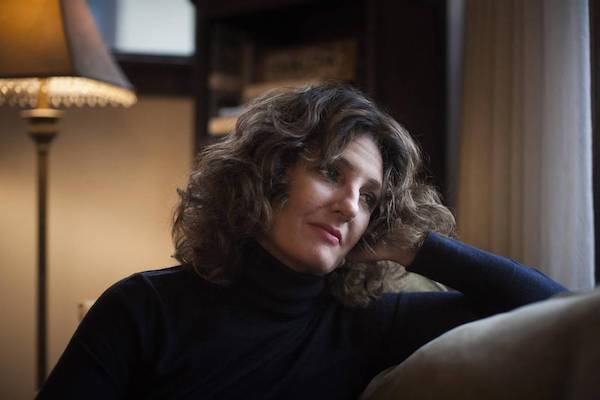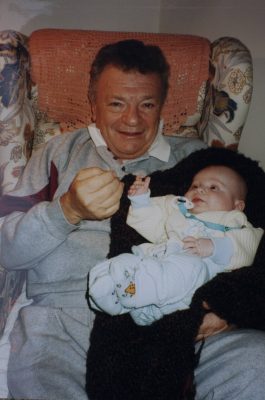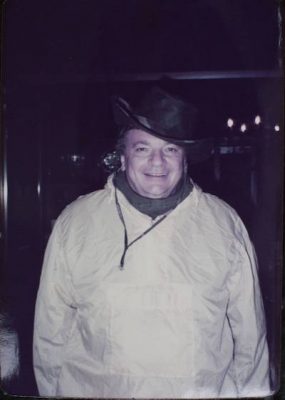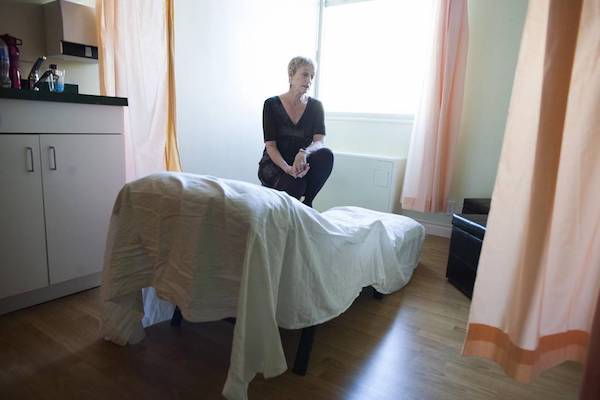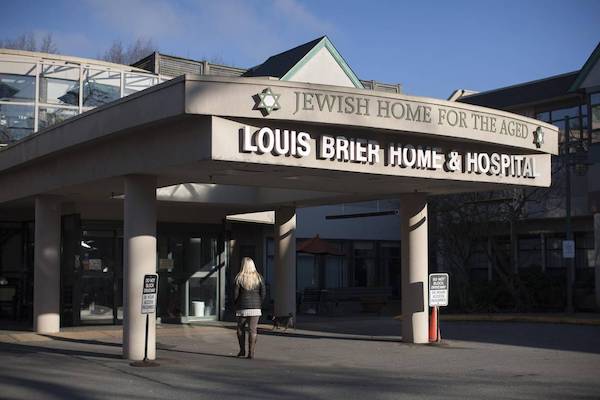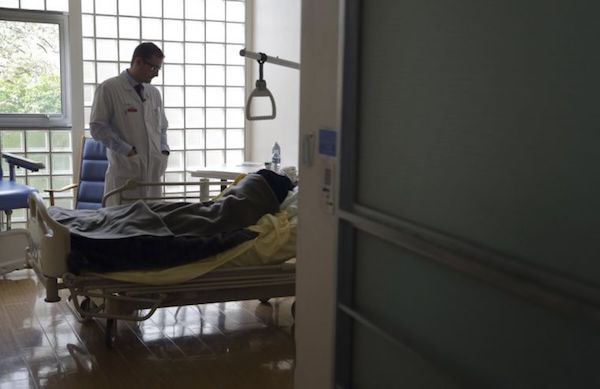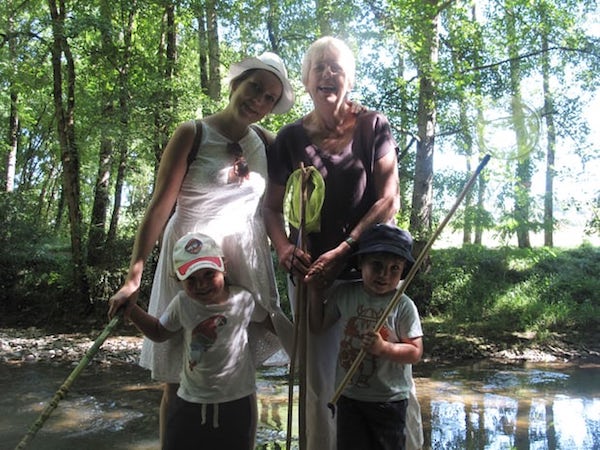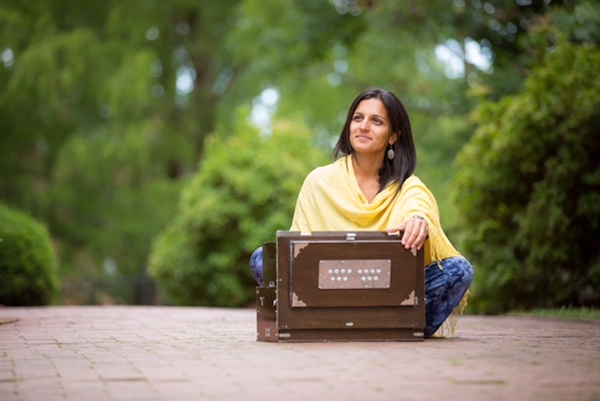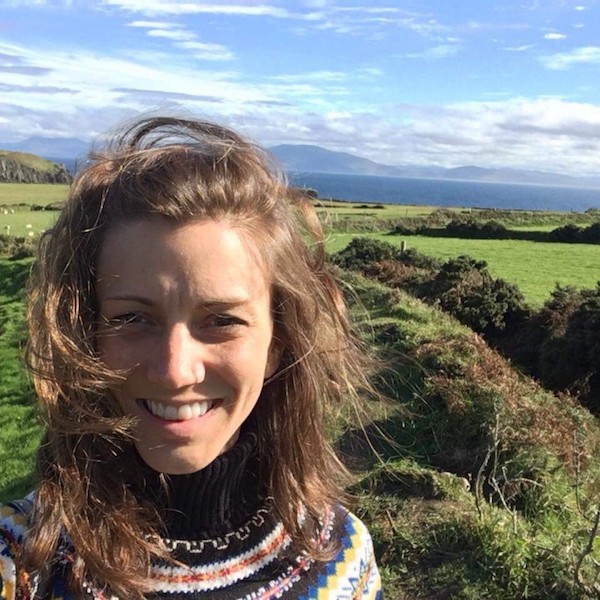The latest death trend is a cross between hygge and Marie Kondo: a sign that dying well has become a defining obsession of our time.
[L]ast spring, at Green-Wood cemetery in Brooklyn, where the artist Jean-Michel Basquiat is buried, another conceptual artist, Sophie Calle, launched an installation called Here Lie the Secrets of the Visitors of Green-Wood Cemetery. For the next 25 years, anyone passing by will be able to write down their most intimate secrets and bury them in a grave designed by the artist. The cemetery also hosts moonlit tours, cocktail parties, dance performances, and even yoga classes.
Death is hot right now, and upbeat gatherings in cemeteries are just a small part of the trend. One of the chief desires of our time is to turn everything we touch into a reflection of who we are, how we live and how we want others to view us – and death is no exception. Once merely the inevitable, death has become a new bourgeois rite of passage that, much like weddings or births, must now be minutely planned and personalised. Not since the Victorian era’s fetishisation of death, with its all-black attire, elaborate mourning jewellery and seances, has death been so appealingly packaged. Every death must be in some way special and on-trend. Finally, the hipster can die as he lived.
If you fancy an environmentally friendly burial, you can choose to be wrapped in a biodegradable artisanal shroud, decorated to your specifications by the bespoke company Vale for $545. (It’s just $68 for pets.) Or you can be buried, as the celebrated California chef Alice Waters says she wants to be, in a burial pyjama suit seeded with mushrooms that help your body decompose more quickly. A few years ago, artist Jae Rhim Lee delivered a Ted talk while wearing one such suit – a black hooded one-piece threaded with white veins infused with mushroom spores. On stage, Lee cheerfully explained that she is training mushrooms to eat her when she dies by feeding them her hair, nails and dead skin so they recognise her body.
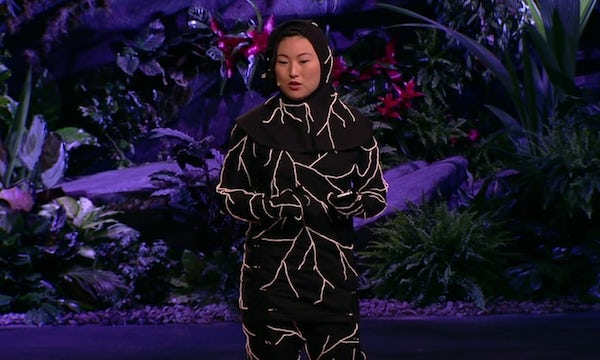
For people less concerned about the environment and more worried about the terrifying prospect of dying alone, there are now solutions (or at least partial ones). You can hire a death doula, a trained professional who will assist at the end of life in the same catch-all manner that birth doulas are there during labour. You can request a home funeral, in which your friends and family pay their respects to your corpse in the comfort of your living room, with every detail as carefully planned as a wedding. And before that day arrives, you can discuss the facts of death with like-minded souls at a Death Cafe, a meeting of the global movement started by Jon Underwood in 2011 (who died last summer of acute promyelocytic leukaemia) as a way for people to gather and reflect on mortality.
One of the people pioneering this new way of approaching death is Caitlin Doughty, a young, Los Angeles-based mortician who looks like a lost member of the Addams Family. She has written a bestselling memoir, hosts a YouTube series called Ask a Mortician and has founded a “death acceptance collective” called The Order of the Good Death, whose youthful members promote positive approaches to mortality.
“It’s OK to be openly interested in death practices,” Doughty told me while driving through LA one afternoon last autumn. “It makes you an engaged human who cares about all aspects of life. Ghettoising it as an interest particular to goths, weirdos or people obsessed with murder creates a dearth of honest conversation about death in the western world.”
This growing interest in alternative “death practices” began as a way to skirt the commercialism and uniformity of the funeral industry. And it appeals to a diverse set of people. “This desire for a pine box in the ground brings together hippies and libertarians, stay-off-my-land gun owners, certain religious people, Trump voters who don’t want big business ignoring what they want,” Doughty said. “They might not all have the same back-to-the-earth vision, but it’s the same fight for their fundamental rights. They don’t want a bland corporate infrastructure to dictate what happens to their mortal remains and what represents their life.”
Given that the idea of rethinking death connects with millions of people who are tired of the rampant commercialism and homogeneity of modern life, it was only a matter of time before commercial interests caught on. Just as the Danish concept of hygge was sold – in the form of scented candles and hand-knitted woollen socks – to consumers looking for comfort in troubled times, there is gold, too, in our obsession with a good death.
[P]ulishers, in particular, have latched on to the trend. Books about death are nothing new, of course, but the pace at which they’re arriving seems to have accelerated. Last year saw the arrival of a stack of literary memoirs about death by authors such as Edwidge Danticat and Robert McCrum. In his memoir, My Father’s Wake, the writer Kevin Toolis explains why the Irish get death right, while Caitlin Doughty’s new book, From Here to Eternity: Travelling the World to Find the Good Death, explores the way cultures across the world, from Indonesia to Bolivia to Japan, approach death.
But perhaps it is not the Irish or the Bolivians who have perfected the art of dying well, but the Swedish. In recent months, thanks to a publisher-led media campaign, you may have come across the concept of döstädning, the Swedish practice of “death cleaning”. Death cleaning applies a simple formula to the process of dealing with our possessions before we die. In Marie Kondo’s The Life-Changing Magic of Tidying, a bestselling guide to tidying up your home, and thus your life, the essential question is whether a given object “sparks joy”. In death cleaning, it is “Will anyone I know be happier if I save this?”
It is easy to see the appeal. Death cleaning addresses many of the aspects of contemporary life that make us most anxious. For those who feel that they have accumulated too much stuff and that all this stuff is getting in the way of their spiritual development, it offers a practical guide to de-cluttering. For those who worry about their privacy or the prospect of relatives discovering their secrets, it offers sensible precautions. For those who fear a long, bewildered, incapacitated old age, it is a way of coping through clear-eyed preparation and understanding.
While Silicon Valley billionaires search for cures for death, the rest of us are just seeking ways of accepting death, ordering a long and messy old age and making peace with our relatives, who are already horrified at the idea of looking after us in our incontinent, incoherent dotage. The fact of living longer doesn’t just give us time to think about death, but also plunges us into chaos, sickness and confusion, and death cleaning seems a valiant attempt to counter this.
Death cleaning is a concept that has had passing mentions in Sweden, but it is not a well-known part of the national culture. In truth, it seems to be more talked about by foreigners who like to imagine Scandinavia as a place where people have life sorted out than it is by Swedes themselves. But even if Swedes rarely talk about döstädning, there is something authentic about the underlying philosophy. The Swedish ambassador to the US, Karin Olofsdotter, recently told the Washington Post that death cleaning is “almost like a biological thing to do”, the natural product of a society that prizes living independently, responsibly and thoughtfully, and whose homes reflect that ideal.
A friend of mine who works as a radio producer in Stockholm said: “My mother is döstädning incarnated. She has been in the mode of frenetic cleaning for couple of years now – she is 65 – [and thinks] throwing stuff out will make it easier for us children when she is no longer with us. She doesn’t want us to be left with difficult decisions about what to do with it and she doesn’t want personal stuff to get in the wrong hands. And ever since I was a teen she has forced me to get rid of stuff – my earliest paintings, old clothes, books I read as a child, memorabilia. Keeps telling me that it’s the best for everyone. I don’t know if it’s typically Swedish, but it is very, very rational and unsentimental.”
The well-funded Swedish welfare state enables elderly Swedes to live independently. “Perhaps this also adds to the sense that they feel they must get their things in order before they die, so that no one else should be responsible for it,” says Michael Booth, author of The Almost Nearly Perfect People, a cultural tour of Scandinavian countries. “Swedes are deeply, deeply responsible people. It is very important for a Swede to do things properly, not to be a burden on others, to take responsibility in this way. Swedes are very ‘proper’.”
According to Booth, the decluttering element of death cleaning “chimes with the general parsimony and minimalism of Lutheranism, which you find traces of throughout many aspects of Scandinavian culture. In Sweden especially, they value the ‘modern’ and ‘new’, and so, if you visit a council dump or recycling centre, you see some fairly eye-popping items discarded – stuff Brits would never throw away.”
Others are more sceptical about the notion that death cleaning is the product of a distinctly Swedish sensibility. “It sounds like a mind-body-spirit thing that could have come from anywhere,” says Robert Ferguson, author of Scandinavians: In Search of the Soul of the North, another book that tries to figure out the roots of our fascination with Scandinavia. “Actually I’m still waiting for the world to discover the joys of kalsarikänni, a Finnish word that means ‘drinking beer on your own at home in your underpants with no intention of going out’.”
[T]he book responsible for spreading the death-cleaning gospel is by Margareta Magnusson, a Swedish artist who describes herself as between “80 and 100”. The Gentle Art of Swedish Death Cleaning: How to Free Yourself and Your Family from a Lifetime of Clutter came out in English a few months ago. It is part practical guide to getting your affairs in order, part discourse on accepting the reality of death. Over the course of 38 very short chapters with titles such as If It Was Your Secret, Then Keep It That Way (or How to Death Clean Hidden, Dangerous and Secret Things), Magnusson sets out her pragmatic and upbeat approach to mortality. “Life will become more pleasant and comfortable if we get rid of some of the abundance,” she writes.
“The message was: we just have to accept that one day we will die,” said her literary agent, Susanna Lea. “Either our loved ones will begrudge us, or they will hold on to this wonderful memory and love us for sorting everything out. Which one do you want?”
As soon as Lea sent the book proposal out, publishers eagerly snapped it up. A German editor made an offer after just four hours. A couple of days later, it was sold to a publisher in Sweden, and then Lea took it to the 2016 Frankfurt book fair, the marketplace for international sales, and sold it to the UK, US and Australia. It is now being translated into 23 languages.
“Interestingly enough, the eastern Europeans have been the slowest to buy it,” said Lea. “They said: ‘We just don’t talk about death.’ I thought the Latin countries might not talk about death, but they completely got it.”
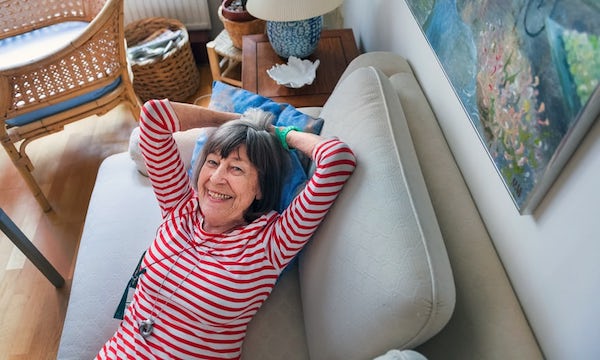
The title has been a challenge. Some countries balk at having death in the title of a book that is slim and small, and packaged like a gift book sold at check-out counters. Others struggle with translating the phrase itself. The Swedish just call their edition Döstädning (the subtitle translates as “not a sad story”). However, nettoyage de la mort does not work in French – they are going to call it instead La Vie en Ordre. The Germans get around it by giving it a title that translates as “Frau Magnusson’s Art of Putting Her Life in Order”.
As the book proposal appeared in the year that hygge and the decluttering guru Marie Kondo conquered the world, it’s not surprising that a book that could be pitched as “Marie Kondo does hygge” was a big hit with publishers. But Jamie Byng, head of Magnusson’s UK publisher, Canongate, strenuously rejects the comparison. “We were not looking for another Marie Kondo, fuck no,” he told me. “I was taken by the idea that this elderly Swedish lady had written a book about leaving this world gracefully and with as little mess as possible. There’s something of Swedish zen about it.”
Magnusson lives in an apartment in a large development in the Södermalm neighbourhood of Stockholm, not far from the upmarket raincoat brand Stutterheim (whose motto is “Swedish melancholy at its driest”), and shops that sell elegant, spare Scandinavian furniture. She’s tall and slender, wearing a striped French sailor-style shirt, faded jeans and trainers, with a grey bob and a long, oval-shaped face. Her most striking feature is her large, round, wet blue eyes. She looks healthy and spry and fashionable without trying hard, which fits the image of her as a mellow, slightly kooky but wise Scandinavian grandma who writes things such as: “Maybe Grandfather had ladies’ underwear in his drawer and maybe Grandma had a dildo in hers. But what does that matter now? They are no longer among us; if we liked them it really should be nothing for us to worry about.”
The first thing to note about Magnusson’s home is that it is not in any way minimalist. In her living room there are shelves of hundreds of books, and gentle abstract paintings by Magnusson herself on the walls. There are a surprising number of stuffed toys and masks from Asia (her late husband was Swedish but born in Japan, and the family lived in Singapore and Hong Kong as he moved frequently for work), presumably all of which have passed the making-people-happy test. The flat is packed with objects of sentimental value that have accrued around an elderly person who once lived in a larger home. It’s all cheerful and very, very neat.
Magnusson noted that Sweden used to be a country of big, quality companies that made things you might want to pass on to your children, or at least that lasted a very long time. “Swedish safety matches and Volvo – the safest car. Now, Sweden is just H&M and Ikea, stuff that doesn’t last more than five years if you’re lucky. It must have changed the culture in the country in a way, I think.”
She has a large collage of family photos hanging in her bedroom: a sister and brother, who are both dead, and her husband, who died in his mid-70s. Her book suggests that sorting through photographs is not the place to begin your death-cleaning process – too many memories to get swept up in, and too much sentiment. Better to start with the kitchen. But when it’s time to declutter your photos, she advises, be ruthless. One of her points is that if you don’t know the names of the people in a photo, feed them to a shredder.
Magnusson has a way, when talking about her life, to assume the mode of a literary narrator. Everything she says sounds like a first line to a self-consciously ruminative memoir. “I grew up in Gothenburg on Sweden’s west coast, and was born on New Year’s Eve,” she told me. “I think I was born in a happy way. It was happy, I don’t know. It started happy.”
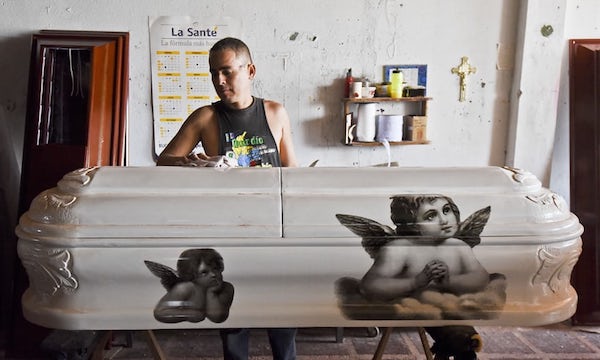
Her pragmatic nature is such that she seemed almost frustrated explaining simple ideas about death and decluttering to a non-Swede such as me. She plans to be cremated when she dies, which is common in Sweden, and for there to be a memorial plaque her family can visit. “I don’t believe in life after death. When I’m dead, I will be dead,” she said.
“To think that you cannot handle yourself, that you think you don’t know what’s going to happen – that must be terrible. I don’t have that fear. I almost died some years ago.” She had woken up in the middle of the night with some kind of heart trouble. “On the way to the hospital, I was just gone,” she said. “Then I really realised that I didn’t see any light in tunnels. I was so happy when I woke up, but I realised that nothing will happen.”
There’s a tipping point in your life, she said, when you start attending more funerals than weddings. “Maybe in the 50s or 60s it starts to happen: my parents, my mother-in-law, my husband and friends,” she said. By that point, Magnusson’s daughter Jane, who lives just across the road, had come over.
“We had a funeral on Friday. It was actually very pleasant,” said Jane.
“Yes, it was very nice. You meet a lot of friends that you had together,” said Magnusson.
“You get to have a good cry,” Jane said.
“Yeah, you have a good cry,” said Magnusson. “But you have also a good laugh.”
[S]wedish death cleaning has found a kind of American counterpart in the rise of a pair of young men from Ohio who call themselves the Minimalists. When one of the duo, Joshua Fields Millburn, lost his mother in 2009, he was left wondering what to do with everything she had amassed in her small apartment. In the end, he decided to donate it all to charity. It was something of an epiphany for Millburn, who began throwing out one thing he owned every day for a month. What would go on to become the foundational principle of his brand of minimalism dawned on him: “Our memories are not inside of things; they’re inside of us.” From that moment almost a decade ago, Millburn and his friend Ryan Nicodemus have built a Minimalist empire – books, podcasts, documentaries, speaking tours – based on the idea that accumulating stuff is simply what we do to distract ourselves from our real problems: lack of satisfaction with work, love, life and, ultimately a way to deny the inevitability of death.
Isn’t all decluttering about death? I asked Doughty, the mortician. “It is a little death to give away a keepsake or an item,” she agreed. “For most people to admit that they should be keeping track of stuff and getting rid of things is extremely threatening to their sense of self and idea as mortal.”
For many of us, the main way we try to look at death is by not looking at it. My own parents constantly talk about how they want their dead bodies to be dealt with – my mother has gone from wanting her cremains to be flushed down the toilet to wanting her corpse fed to dogs – and yet the elaborate plans for death are a way around dealing with it. My father won’t even write a will, instead preferring to phone me at odd hours from California to get me to make solemn promises that, after he is gone, I will do or will not do certain things (such as keeping his house in the family, or making sure to invite specific people to his funeral).
This highly developed awareness of their own mortality and careful consideration of how to dispose of their remains, combined with a total lack of planning for what happens in the weeks, months and years after the funeral, sometimes feels like my parents’ way of ensuring that their large personalities will gently haunt me from the afterlife. Or, to put it more politely, it seems like a way to guarantee their presence in my life as long as possible.
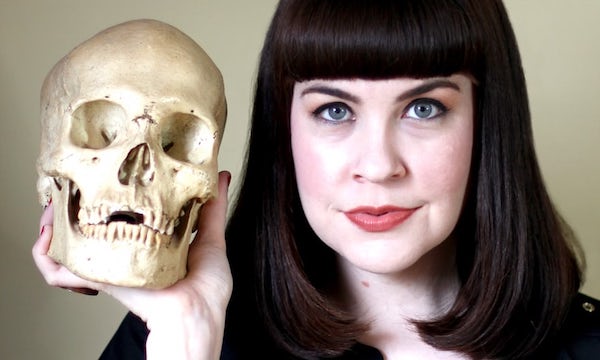
But I also sympathise with them. Both of my parents are 66, and will hopefully be around for some time. Dealing with one’s own legacy is a stark business. It involves accepting that you are the one who cares most – or perhaps the only person who cares at all – about your own legacy. At the same time, it means confronting hard questions about the people you will leave behind. Will your last gift to your loved ones be to leave them a few valuable possessions, or a photo album full of memories, or simply the great favour of not burdening them with having to sort through all the stuff you accumulated over your lifetime?
Doughty says that any parent who is “unwilling to have a basic conversation about death with your desperate kids – that’s a profound unkindness”. At 33, she has a will and a plan for what will happen to her business and the small cabin she owns when she dies. That has brought her comfort, she says. At 40, I don’t have any plans in place for my own death, unless you count drunkenly asking various friends to promise they would take my dog in the event that she becomes an orphan. Perhaps I am more like my parents than I would like to think.
Planning for death is hard, because it means that one must accept that you are the one who cares most, or at all, about your own legacy. To plan for death is to accept both ideas simultaneously. “There might be no one at your bedside. You might not be found for two days and eaten by cats. That’s all in the realm of possibility,” Doughty said. “But even surrounded by loved ones, you check out alone. This is your personal journey to go on.”
The idea of death as a solo journey is redolent of the language of wellness: the way people talk about getting into their fitness or diet or mindfulness routines. This new view of death borrows heavily from another trendy concept: self-care, the idea that looking after oneself is a political act, shoring yourself up to be able to keep fighting and facing the world. Self-care, too, has been co-opted to be about treating yourself to bath products, massages, face masks and yoga retreats – granting yourself an excuse to make it OK to buy stuff. The commercialisation of death is the inevitable sequel to the monetisation of every other part of life.
Death cleaning is possibly more potent than other wellbeing trends in that it taps into deep emotions: fear, guilt, regret. The death industry exploits people’s fears of inadequacy. You can’t just die – at the very least, you’ll need to invest in a house-tidying consultant, a death doula, an environmentally sound bespoke shroud, and a home funeral, to prove just how well you lived.
Complete Article ↪HERE↩!

